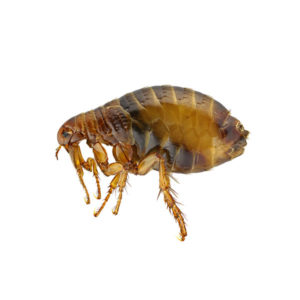American Dog Ticks in Atlanta, GA
The American dog tick inhabits regions east of the Rocky Mountains and a few western states like California, Idaho, and Washington. Despite its name implying a preference for dogs, this tick species frequently targets larger mammals including mice, deer, cattle, horses, and even humans. A single tick bite from one of these ticks on pets or humans can lead to the transmission of diseases such as Rocky Mountain Spotted Fever and Tularemia. If a suitable host is not found, American dog ticks can live for up to 2 years at any developmental stage.
American Dog Tick Habitat
American dog ticks primarily inhabit locations characterized by minimal or absent tree cover, such as grassy fields, scrubland, and pathways. Residential areas with overgrown shrubs, weeds, tall grass, and clutter create an environment that attracts rodents, serving as hosts for immature ticks. Adult ticks ascend onto low vegetation, securing themselves with their third pair of legs, and sway their legs when detecting a potential host nearby. When a host passes by and brushes against the vegetation, the tick seizes the opportunity to latch onto the passing animal or human.
American Dog Tick Behaviors, Threats, or Dangers
The greatest likelihood of experiencing American dog tick bites is in the spring and summer seasons, with adult females being the primary culprits in biting humans. Both nymphs and adults have the potential to transmit diseases like Rocky Mountain Spotted Fever and Tularemia. To reduce the risk of bites, it is advisable to use insect repellents containing EPA-registered ingredients, such as DEET. Additionally, wearing long-sleeved shirts and pants, preferably in light colors for easier tick detection, and tucking pants into socks can be effective preventive measures.
If you encounter an American dog tick issue, seek assistance from the experts specializing in tick control at Inspect-All Pest Services.




